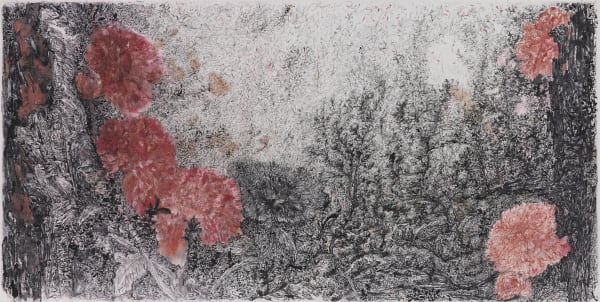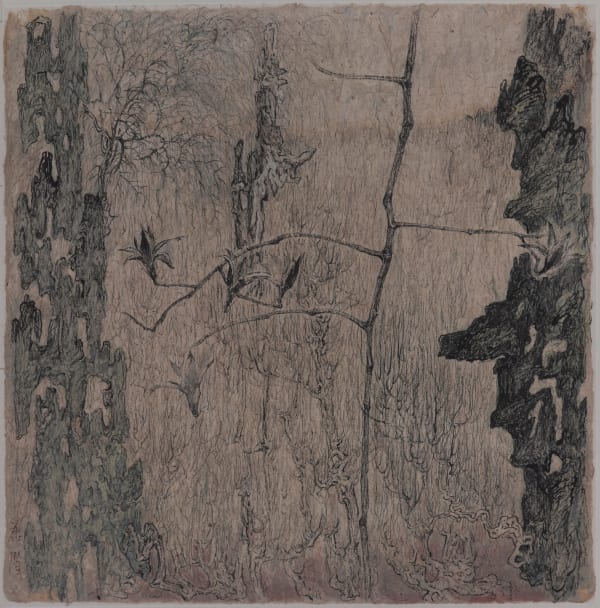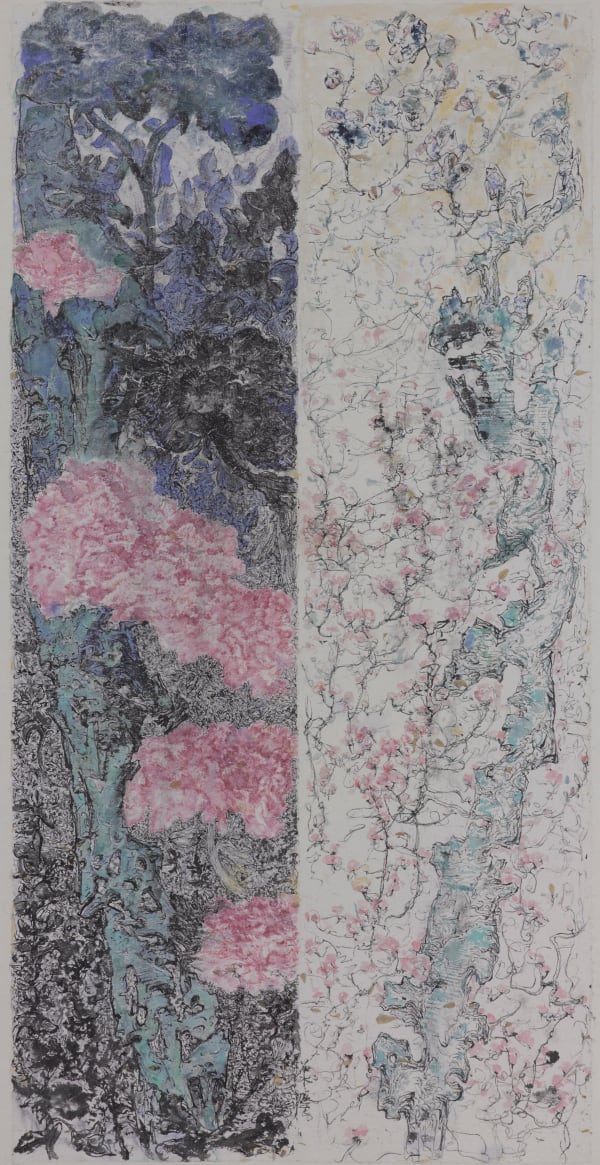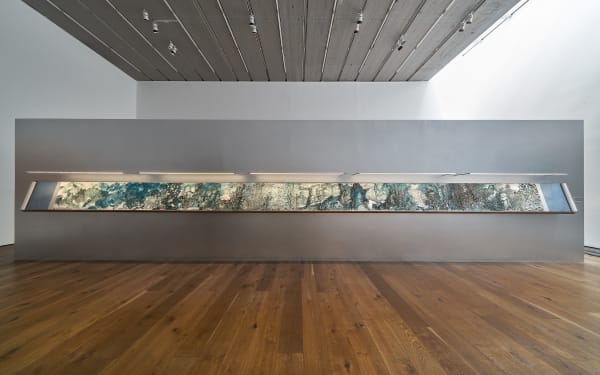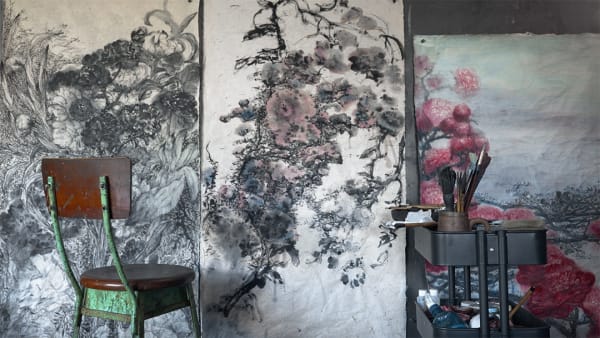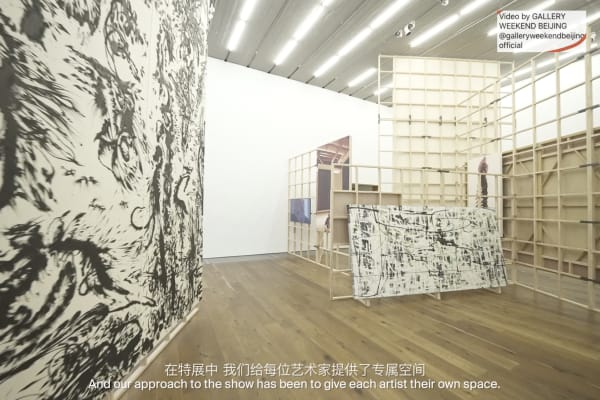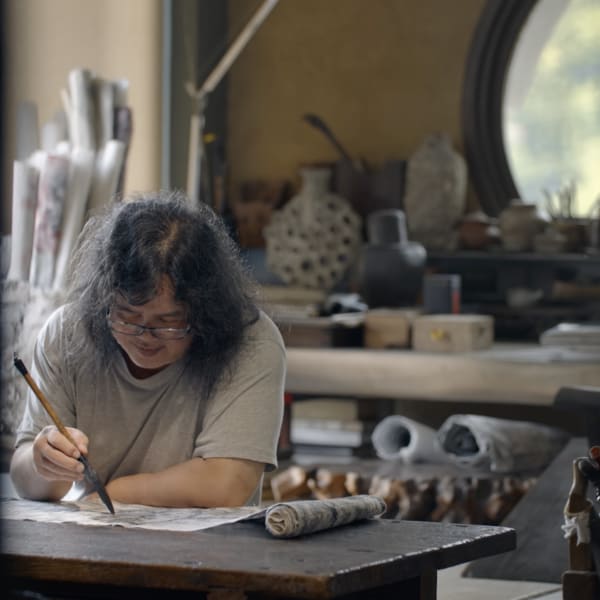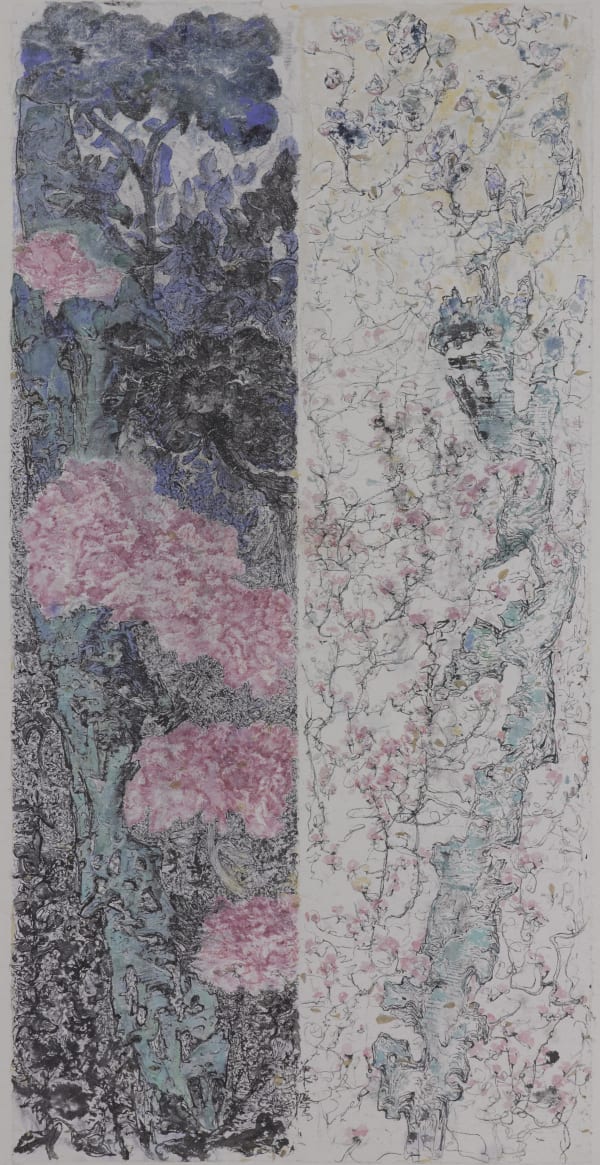b. 1962 in Hualien, Taiwan
Peng Kanglong is a literati-recluse artist who paints in the traditional landscape and flower genres. Having graduated from the Taipei National University of the Arts in 1988 with a focus on Chinese brush and ink painting, his major stylistic influences include the 17th century Monk artists Shitao (1642-1707) and Kuncan (1612 to after 1674), as well as the Modern landscape master Huang Binhong (1865-1955).
In the long history of Chinese brush and ink painting, landscape and flower painting are two distinct genres with their own metaphoric languages, painting techniques, representative masters and developmental histories. With the possible exception of Huang Binhong (1865-1955), Peng Kanglong is perhaps the first ink artist to explore the artistic possibilities of integrating these formerly separate genres. Whereas Huang Binhong's artistic breakthrough employs the brushwork of flower painting to transform landscape painting, Peng Kanglong works in the reverse direction employing the fine texture strokes and expansive compositional depth of landscape painting to render his extraordinary flowers.
Beginning in 2020, Peng Kanglong undertook an exploration of monumental compositional forms inspired by the Northern Song landscape. Combining the compositional scale of the Imperial landscape of the Northern Song with the expressive, autographic brushwork of the Yuan literati became an artistic goal of landscape painters in the periods that followed such as Shen Zhou (1427-1509) and Dong Qichang (1555-1636) of the Ming Dynasty, Wang Hui (1632-1717) and Gong Xian (1618-1689) of the Qing Dynasty and Huang Binhong of the Modern period. What distinguishes Peng Kanglong's "Grand Synthesis" is his integration not just of composition and brushwork from the Song and Yuan-Ming-Qing periods but also his simultaneous cross-integration of the encompassing landscape and flower genres.
Peng Kanglong's works have been recently exhibited in "Grand Synthesis: The Extraordinary Flower-Landscapes of Peng Kanglong", INKstudio, Beijing (2023), "Many Splendored Spring", New York Asia Week, New York (2023), "Feast of Verdure", The Historical Grand Courtyard, Taipei (2021), "Mukuteki", The Museum of Kyoto, Japan (2019), "Different Paths: Exploration in Ink", Sotheby's S|2, Hong Kong (2017), and "Shuimo: Ten Thousand Blossoms Spring", Sotheby's S|2, New York (2015) amongst others. His work can be found in the permanent collections of the National Taiwan Museum of Fine Art, the Taipei Fine Art Museum, the Fubon Cultural & Educational Foundation, the Abu Dhabi Royal Family Collection, and the Fondation INK Collection in Geneva, Switzerland.
-
 Coiling Dragons in the Clouds 雲虯, 2022
Coiling Dragons in the Clouds 雲虯, 2022 -
 Jade Inlaid Vermilion Sky 彤天栽玉, 2022
Jade Inlaid Vermilion Sky 彤天栽玉, 2022 -
 Splendid Flowers Valley 锦绣万花谷, 2022
Splendid Flowers Valley 锦绣万花谷, 2022 -
 Before the Rainstorm 密云不雨, 2020
Before the Rainstorm 密云不雨, 2020 -
 Brimming Urn 盈缶, 2020
Brimming Urn 盈缶, 2020 -
 Contained Virtues 含章可貞, 2020
Contained Virtues 含章可貞, 2020 -
 Difficulty in Moving Forward 往蹇, 2020
Difficulty in Moving Forward 往蹇, 2020 -
 Golden Beauty 金姹, 2020
Golden Beauty 金姹, 2020 -
 The Withered Poplar Blossoms-1 枯杨生华-1 , 2020
The Withered Poplar Blossoms-1 枯杨生华-1 , 2020 -
 The Withered Poplar Blossoms-12 枯楊生華-12 , 2020
The Withered Poplar Blossoms-12 枯楊生華-12 , 2020 -
 Night Raid 夜袭, 2019
Night Raid 夜袭, 2019 -
 Toon 香椿, 2017
Toon 香椿, 2017 -
 Wild Garden with Peonies and Vines 亂花之牡丹與藤蔓, 2008
Wild Garden with Peonies and Vines 亂花之牡丹與藤蔓, 2008 -
 Intermittent Landscape Handscroll 段段续续山水长卷, 2005
Intermittent Landscape Handscroll 段段续续山水长卷, 2005 -
 Light Excursion 轻旅, 2005
Light Excursion 轻旅, 2005
-

Grand Synthesis: The Extraordinary Flower-Landscapes of Peng Kanglong
16 Sep - 28 Oct 2023INKstudio’s first solo exhibition after the re-launch of its program in China this June will be the Mainland Chinese debut solo exhibition for the classically-trained flower and landscape painter Peng Kanglong...Read more -

Global INK: INKstudio’s Ten Year Anniversary Exhibition
Bingyi, Chen Haiyan, Huang Chih-yang, Li Jin, Li Huasheng, Liu Dan, Peng Kang-long, Wang Dongling, Wang Tiande, Xu Bing, Yang Jiechang, Zheng Chongbin 17 Jun - 29 Jul 2023The current exhibition, Global INK, is our opportunity to share with everyone what we have discovered over our first decade of programming. It is not a group show but instead a special exhibition consisting of twelve separate solo presentations by twelve artists who we believe define the new global contemporary INK.Read more -

New York | Many Splendored Spring
The Extraordinary Flower-Landscapes of Peng Kanglong 15 - 19 Mar 2023Ukrainian Institute of America 2 E 79th Street New York, NY 10075 Peng Kanglong’s Flower-Landscapes Peng Kanglong彭康隆 (b. 1962 in Hualien, Taiwan) is classically-trained artist who paints in the traditional...Read more











